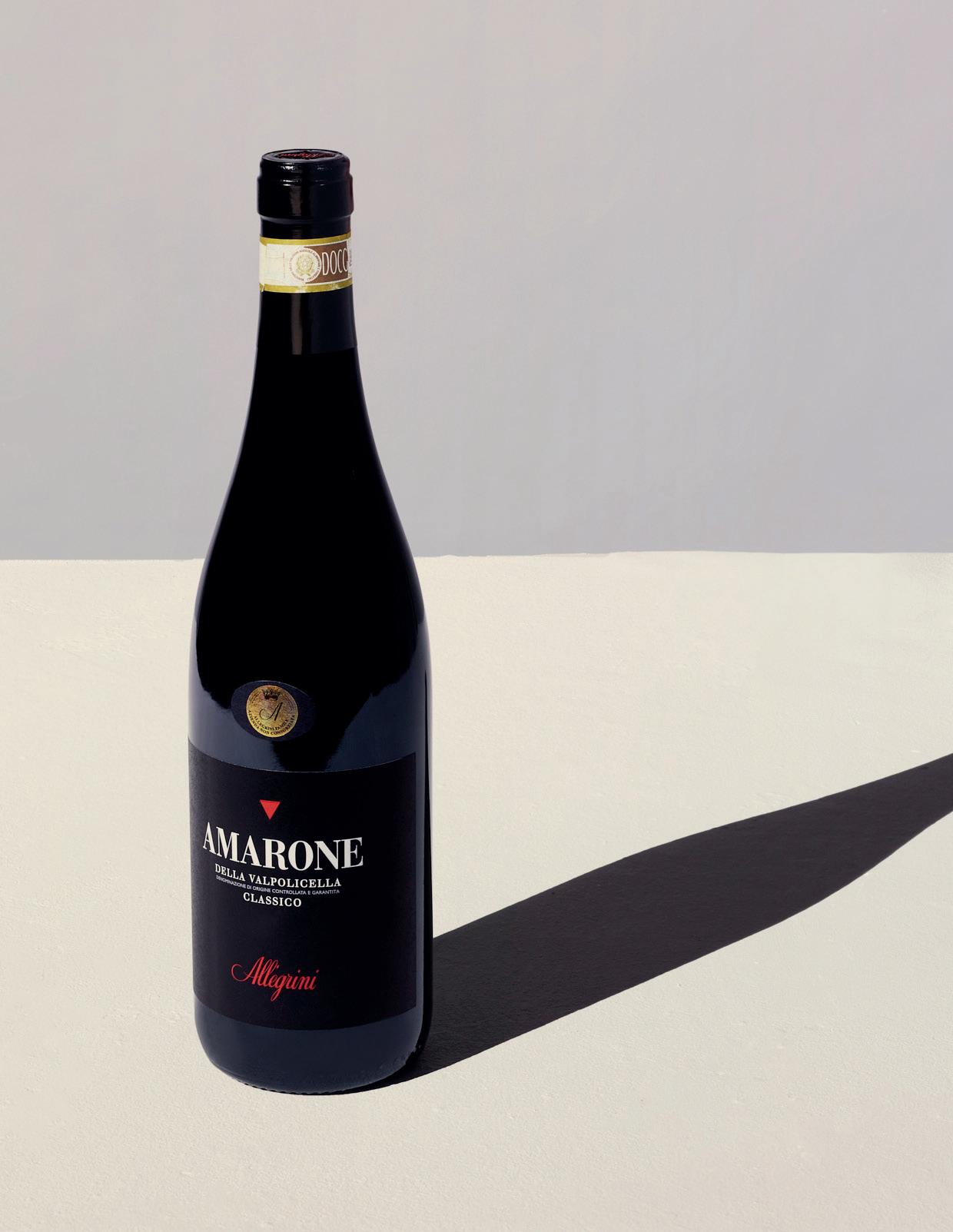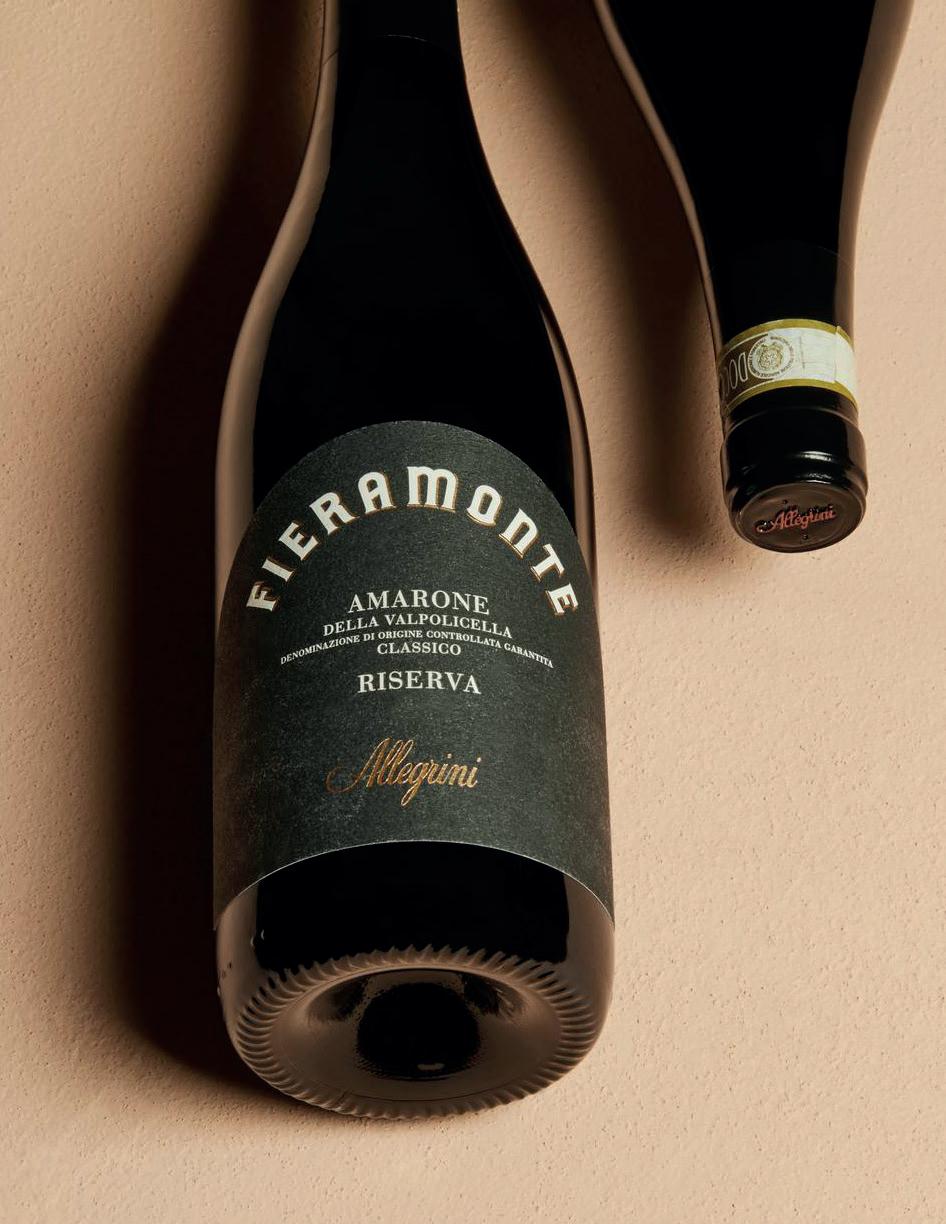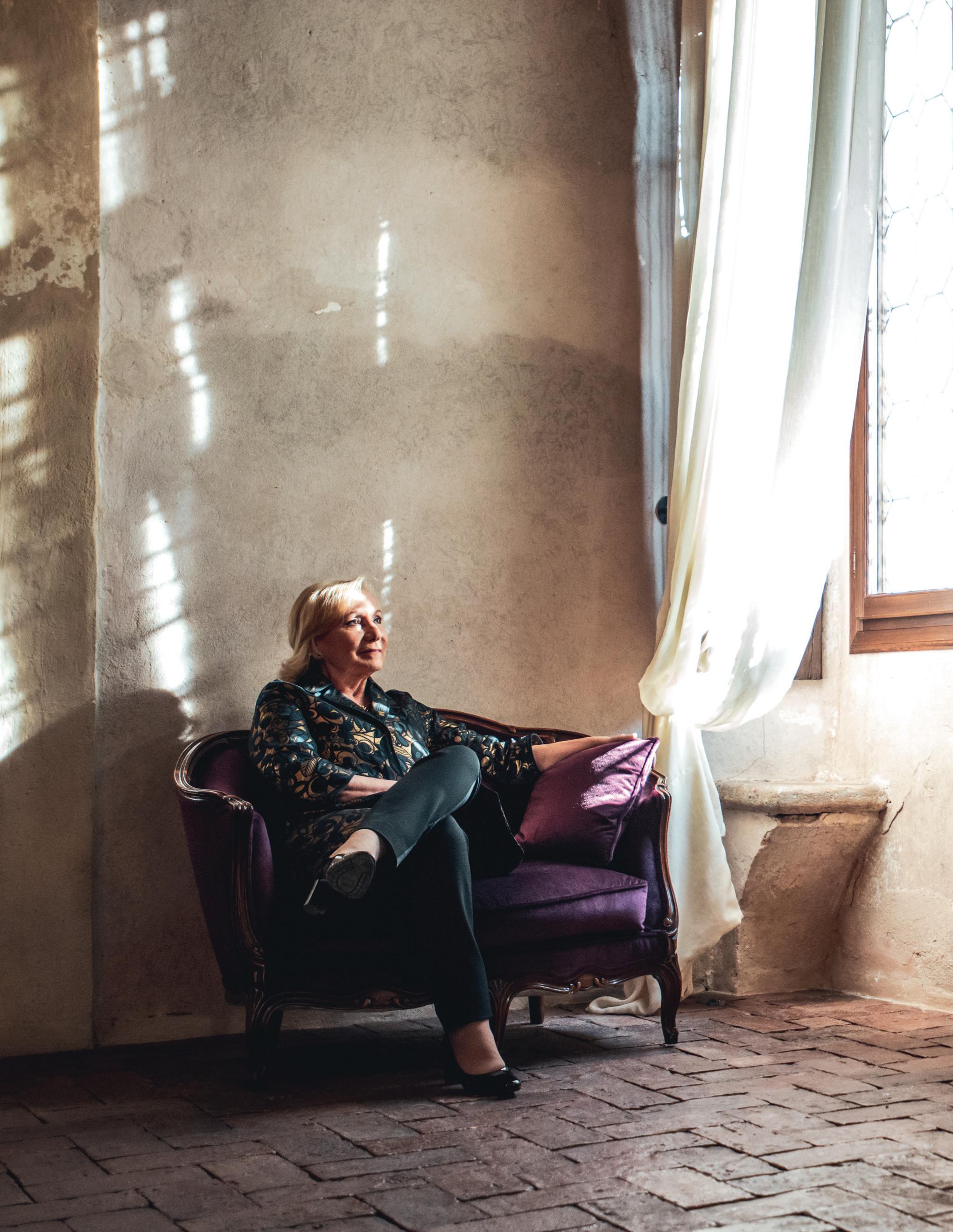
ALLEGRINI ESTATE BOOK




The Allegrini family dates back six generations in the region of Valpolicella, but the modern estate was established by Giovanni Allegrini in the early 1960’s. He birthed Allegrini’s focus on high-quality cru wines, purchasing and replanting the La Grola, La Poja and Palazzo della Torre vineyards just before his death in 1983. The winery was carried on by his three children, Walter (deceased), Marilisa, and Franco. Marilisa is the current CEO and Franco is lead viticulturist and winemaker.
Today, the Allegrini family farms over 120 hectares across the Valpolicella Classico region. All of their wines are estate-grown. Their winery is located in the subzone of Fumane where they maintain operations as well as provide hospitality through the historic, Renassiance-era Villa della Torre. However, their most famous single-vineyard wines, La Grola and La Poja, are located in Sant’Ambrogio, the western-most subzone of Valpolicella Classico.
Valpolicella Classico REGION
1500’s FOUNDED
Marilisa & Franco Allegrini PROPRIETOR
Franco Allegrini WINEMAKER
Valpolicella Classico 120 ha VINEYARDS
Certified Sustainable in the EU ENVIRONMENTAL
We import several wines from Allegrini, including their benchmark Amarone and the famous IGT wine, Palazzo della Torre.
Highlighted in the following pages is a selection of the estate’s top expressions. If you’re interested in exploring more of the portfolio, please use any of the QR codes to be guided to our website where you’ll find downloadable tech sheets, images, scores, and more.
REDS
WHITES
Amarone della Valpolicella Classico DOCG
Amarone della Valpolicella Classico Riserva DOCG ‘Fieramonte’
Veneto IGT ‘La Poja’
Veneto IGT ‘La Grola’
Veneto IGT ‘Palazzo della Torre’
Valpolicella DOC
Lugana DOC ‘Oasi Mantellina’


Allegrini’s Amarone Classico is a stylistic benchmark for the region and an unusually gastronomic Amarone. In typical vintages, it hovers around 15.5% alcohol, with less than 3g/L residual sugar, maintaining a finesse that’s rare in a region known more for port-like wines of power and density.
They accomplish this restrained expression through high elevation vineyards as well as careful management of the appassimento process, avoiding any development of botrytis. They also use an unusually high amount of Corvinone in the blend (45% or more), a native grape that’s larger-berried and thicker-skinned than Corvina. This results in greater structure and finesse in the finished wine. Or, as winemaker Franco Allegrini says it: “Never a dead man in the bottle.”
GRAPES
VINEYARDS
FERMENTATION
AGEING
FINISHING
PRODUCTION
Corvinone, Corvina, Rondinella, Oseleta
Subzone of Fumane, Valpolicella Classico; Calcareous clay; 180m-280m asl; Pergola & Guyot
Spontaneous in stainless steel; Appassimento for 90-120 days
18 months in large Slavonian casks and 500L tonneaux; 12 months in bottle
Filtered & Fined
~150,000 bottles
Allegrini’s top bottling is this powerful single-vineyard Amarone Riserva, grown in a 6ha vineyard in the foothills of the pre-alps, overlooking the valley of Fumane in Valpolicella Classico. The vineyard soars to 430m asl with a southeastern exposure that brings power in the finished wine.
As a piece of land, the Fieramonte vineyard had been in the Allegrini family for generations; its initial acquisition was made in an effort to access a naturallycoccuring spring. Many decades later, Giovanni Allegrini planted grapes on the property and from it produced the estate’s first single-vineyard expression, released with the 1980 vintage.
Giovanni died in 1983, and the vineyard was scrapped after the 1985 vintage as it succumbed to disease. It was only in the past decade that winemaker Franco Allegrini revived the vineyard, replanting it in 2003 with the intention of creating a heritage style of Amarone, a nod to his ambitious father.
GRAPES
VINEYARDS
FERMENTATION
AGEING
FINISHING
PRODUCTION
Corvina, Corvinone, Rondinella, Oseleta
Single Vineyard; 6ha in the subzone of Fumane, Valpolicella Classico; Calcareous Clay; 430m asl; Guyot
Spontaneous in stainless steel; Appassimento for 90-120 days
4 years in new barriques (low toast); 12 months in bottle
Filtered & Fined
~5,000 Bottles and only in top vintages


The top expression of Allegrini’s ‘cru’ wines, planted in 1979 at the top of the cru of La Grola in the subzone of Sant’Ambrogio. A “cru within a cru,” the La Poja vineyard is a diamond shaped 2.65ha plateau with chalky soils, planted entirely to the region’s noble grape: Corvina.
This was a passion project of Giovanni Allegrini; he wanted to prove Valpolicella’s capacity to make great wines of terroir. La Poja was the first commercially released 100% Corvina wine (these were also some of the first Corvina vines to be planted to Guyot). Still today, it’s rare to find varietal Corvina that hasn’t undergone the appassimento process. La Poja offers an opportunity to taste the grape in a “pure” form, albeit from a truly powerful site.
Unfortunately, Giovanni Allegrini didn’t live to see the final product; the first vintage was released in 1983, just months after he passed away.
GRAPES Corvina (100%)
VINEYARDS 2.65ha parcel within the La Grola cru, subzone of Sant’Ambrogio, Valpolicella Classico; Calcareous clay; 330m asl; Guyot
FERMENTATION
AGEING
Spontaneous in stainless steel
20 months in new barriques (Allier); 8 months in large Slavonian cask; 10 months in bottle
FINISHING Filtered & Fined
PRODUCTION ~13,000 Bottles
Allegrini’s newest bottling is this Turbiana-based white wine from the southern shores of Lake Garda. The 50ha vineyard is located in Pozzolengo, just over the border from the Veneto in Lombardy. The soils here are morainic in origin, with sandier clay and significant deposits of rocks throughout.
Turbiana is prized for its naturally high acidity and mineral finish, but the grape can be used to create a variety of styles. Allegrini makes a particularly lean and taut style of Lugana, favoring an earlier harvest and stainless steel fermentation to bring out florals and citrus in the finished wine.
GRAPES
VINEYARDS
FERMENTATION
AGEING
FINISHING
PRODUCTION
Turbiana, Cortese
50ha in the municipality of Pozzolengo, Lugana DOC; Clay, sand, gravel; 100m asl; Guyot
Stainless Steel; No MLF
4 months on the lees; Two months in bottle
Filtered & Fined
~100,000 Bottles


If you drink Amarone, one need only see that red triangle to know what it references. Great branding, but it wasn’t developed by a marketing agency; far from it, in fact. As the story goes, Giovanni Allegrini designed the label himself as a nod to the packaging of his favorite brand of cigarettes.
And that was Giovanni Allegrini - not a celebrity winemaker in a Hermes scarf, but a farmer who couldn’t stay out of the fields. He was a blue-collar visionary that believed so deeply in the importance of great vineyard sites, he nearly bankrupted his family when he purchased the crus of La Grola and Palazzo della Torre in the late 1970’s. Locally, they called him the barrel spider; short in stature, but coiled, powerful, athletic. He would hop from cask to cask pulling tastes of wines for guests. Humble, hospitable, and devoted to the land, he passed away in 1983 before he could
even see the first vintages bottled from his famed La Grola vineyard. It was a life cut unexpectedly short, and his uncompromising vision then left to his three children, Walter, Marilisa, and Franco.
They were not ready. ***
The true story of Allegrini isn’t the genteel narrative of a successful business bestowed upon wellapprenticed children. The siblings were left with world-class vineyards, yes, but also significant debt and a near-impossible standard to uphold. Add to it: Valpolicella was in a stretch of four bad vintages in eight years, the worst in the region’s recorded history. The modern winery was forged through trial, not transition. As Marilisa Allegrini told Wine Spectator
“...I REMEMBER WALTER SAID, “WE HAVE TO FIGHT LIKE LIONS FOR THE COMPANY TO SURVIVE.””
Marilisa Allegrini in Wine Spectator, April 2017
in 2017, “We were desperate, because we were young and we didn’t have the business in our grasp. I remember Walter said, “We have to fight like lions for the company to survive.’”
Marilisa, the second and most charismatic of the three children, quit her job as a physical therapist and made for America. She would spend two months in New York, Boston, and Chicago, selling just enough wine - and learning just enough English - to get the family through their first vintage without their father. More importantly, however: she listened. What she learned on that trip firsthand was that wines from Valpolicella weren’t traveling well - customers in the US were turned off by the oxidative qualities…in other words, the wines tasted tired. There was a quality control issue, affecting not just Allegrini, but all of Valpolicella. (One has to wonder: would a more assured, less “desperate” winery have picked up on these opportunities?)
Meanwhile, Walter (the agronomist) and Franco (the winemaker) were back in Italy, already interested in making a cleaner and more gastronomic expression of Amarone, which was - at the time - the region’s rising expression. Marilisa’s dispatches from the States threw fuel on their proverbial fire, and over the following years they refined their Amarone through
vineyard selection, cellar hygiene, and, perhaps most importantly, obsessive control over the appassimento process. Today, Allegrini represents the ne plus ultra of gastronomic Amarone; clean, structured, bone dry, and balanced. Or, as Franco Allegrini likes to say: “Mai un cadavere in bottiglia” (“Never a dead man in the bottle”).
Giovanni Allegrini could never have known, but this is what Allegrini’s red triangle would come to represent: not just a brand, but a benchmark style, built by three siblings with their backs against the wall, charged with the pressure of legacy.


 Proprietor Marilisa Allegrini inside the renaissance-era Villa Della Torre
Proprietor Marilisa Allegrini inside the renaissance-era Villa Della Torre